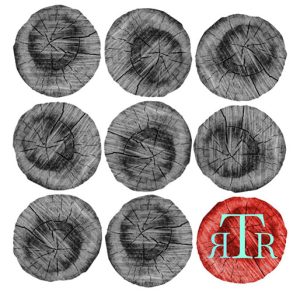The Chattahoochee Review – Winter 2008
Volume 28 Number 1
Winter 2008
Quarterly
Mary Baken
For those of you familiar with the Chattahoochee Review’s twenty-five year publishing history, this probably won’t come as a big surprise; but for me, a newcomer to the magazine, I knew as soon as I read John Stazinski’s heartbreaking short story “Waiting for a Dog to Run,” that the CR had achieved a level of literary sophistication that far outran the rest. I instantly realized I now had a new standard with which to measure my critiques.
For those of you familiar with the Chattahoochee Review’s twenty-five year publishing history, this probably won’t come as a big surprise; but for me, a newcomer to the magazine, I knew as soon as I read John Stazinski’s heartbreaking short story “Waiting for a Dog to Run,” that the CR had achieved a level of literary sophistication that far outran the rest. I instantly realized I now had a new standard with which to measure my critiques.
Stazinski’s beautifully rendered short story manages to comment on the current crisis in our healthcare system, our economy, and in academia, all through the very particular crisis of a very particular marriage. It’s the characters in this story that truly move me: Paul’s admirable yet “dog-like” devotion, Alex’s determination to out-gamble the odds. As in real life, this is a marriage where overt blame is fruitless, where all solutions to keep the marriage moving forward will ultimately lead it catawampus rather than straight ahead.
The poetry in this issue is likewise well above standard. I loved the family portrait poems by Josie Sigler, particularly “The Lingerie Mother” and “Uncle Walt,” and was completely astonished, broken, and stalled by John Guzlowski’s Holocaust poems.
This issue has a special focus on Japanese fiction. The preface by Mariko Nagai serves as an introduction for those new to contemporary, or “living” Japanese writers. This section includes stories by Haruki Amanuma, Novala Takemoto, and Keiichiro Hirano, an interview between Nagai and “mystery” writer Natsuo Kirino, and non-fiction essays by Kyoko Mori and Jeanne Larson.
The stories struck me as highly experimental and strange, dark and pessimistic, intriguing and unsettling. As Nagai points out in her Preface, Western readers may find these stories disappointing because they do not fit “the familiar formula of storytelling.” While Western readers typically expect some form of climax and conclusion, or “doing” as Nagai names it, Japanese readers are content with simply “being.” But, for me, the strangeness of these stories seemed artificial and gratuitous, experimental for the sake of being experimental. I felt as if I were reading a literary style in transition, a pushing and shoving that hadn’t quite realized its form. This is not to say it wasn’t an extraordinary read; I was fascinated by the voices in these stories, and likewise fascinated by the actual voices in the interview between Nagai and Kirino. And finally, I thoroughly enjoyed Kyoko Mori’s nonfiction essay “The Language of Flowers,” which beautifully depicts her experience of straddling two cultures through the differences in their languages and alphabets.
[thechattahoocheereview.gpc.edu/]




